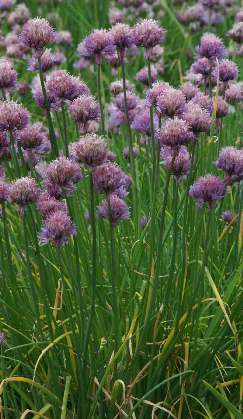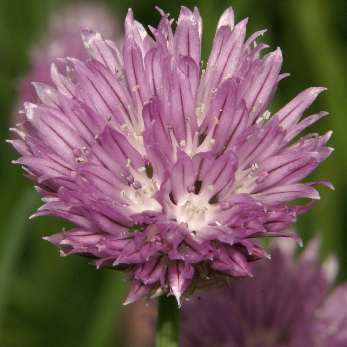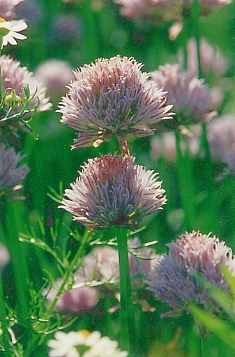
|
| Chive flower |
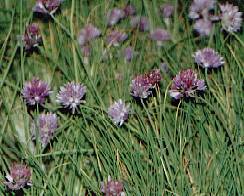
|
| Flowering chives |
Although chives are more used alone than combined with other fresh herbs, chervil, tarragon and parsley are particularly worth trying; this mixture is known as fines herbes in French cuisine and is frequently suggested for subtly-flavoured cold and warm dishes, e. g., salads, scrambled eggs, fish and poultry. Fines herbes can also effectively be enhanced by addition of some cress, cicely or lemon balm. Less recommendable is the combination of chives with garlic, which would overpower chives’ delicate aroma; much better suited is bear’s garlic with its significantly less dominant fragrance; lovers of this herb might even try to use it instead of chives.
In the mountain climate of the Alps, chive is one of the few herbs that can be grown locally, and correspondingly enjoys significant popularity. Black rye bread with butter and chopped chives may seem a modest meal, but tastes quite good with Tyrolean butter; indeed, this food has even left traces in the world’s literature (The Hitchhiker’s Guide to the Galaxy).
Another field of application for chives is cheese, especially cottage cheese and other very mild varieties. Cottage cheese flavoured with chives and optionally other fresh herbs is a popular spring dish in Central Europe.
The spice is nearly always used fresh, because it loses all its flavour by
drying. Industrially, dried chives are produced by the less destructive process
of lyophilization, but still I prefer the fresh product; in winter, deep-frozen
chives are fully satisfactory.
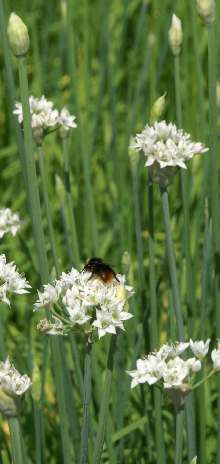
|
| Garlic chives |
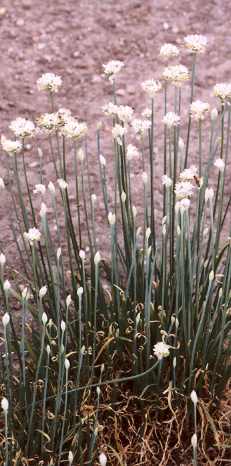
|
| Garlic chives (A. tuberosum) |
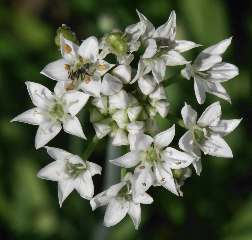
|
| Garlic chive flower |
Related species are used in the cuisines of China, Tibet and parts of South East Asia; these are mostly not available in the West. Chives make a good substitute for these and are often asked for in cookbooks without any further comment (e. g., momos, see Sichuan pepper).
In Chinese cooking, the flat leaves of garlic chives (Allium
tuberosum), native
to the Himalayas, are often employed in the same way as chives in European
cooking,
In Nepal, a chive relative called jimbu (also known as
Himalaya onion, Allium spp.) is often used for cooking,
especially for flavouring potato curries and dal [दाल], boiled legumes.
Usage is restricted to some Himalayan communities, e. g., the Thakali. Rather
uniquely, jimbu leaves are usually in the dried
state and very shortly fried in butter fat or oil to develop their flavour (see also ajwain on Indian spiced butter, tadka).

